Here is an easy drawing and painting lesson of an elephant that allows for unlimited expression.
You’ll need:
- 12″ x 15″ paper
- Tempera paint palette #1: white, black, pink
- scissors, pencils, glue, black waterproof marker
- extra sheet of 12″ x18″ paper (children decide the color)
- Tempera paint palette #2: various background colors
Step One: Drawing the elephant
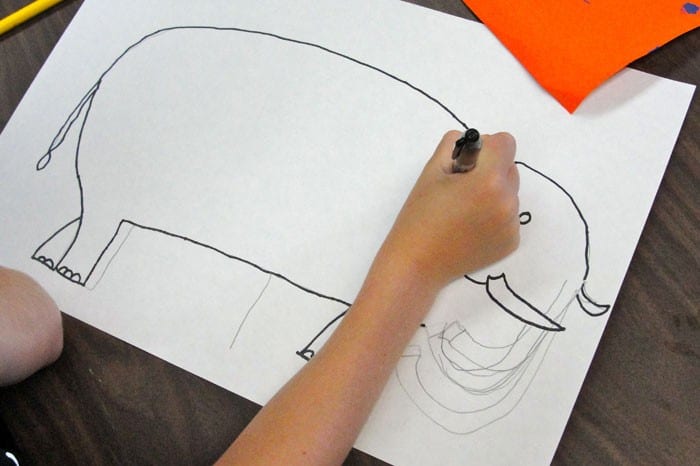
DRAWING DEMO
Depending on the lesson, I’ll either give directed-line drawing instruction or a drawing demonstration followed by the children creating their own drawing based on my samples, handouts, etc.
For this lesson, I chose the latter. I try to draw as simple an elephant as possible. I really think that an elephant (or a giraffe, for that matter) is really the safest and most rewarding animal to draw since no matter how your work ends up, it always look like your intended subject. Something about that trunk and big, floppy ears!
HOW TO DRAW AN ELEPHANT
To start, show the kids how to draw a basic elephant. Don’t get too hung up if you can’t draw. Give it your best effort and hopefully the kids will be inspired by your efforts.
Here are a few tips though…start with a dot for the eye. The eye placement (as with most of my drawing instructions) is really crucial. Have the children place their left hand on the right hand side of the paper with their pointer finger touching the edge of the paper. Have them draw a dot where their pinky is. Now leave the eye alone and draw a letter “J” starting to the right of the eye and going half way down the page. This, as you might see, is the trunk.
Next, I like to go back up to the top of the head and smooth out that area so the elephant has a nice, rounded forehead. While you’re there, draw a big, letter “C” for the ears. Make the line squiggly and the ears will look more realistic. Draw a mouth and finish the trunk.
Starting at the head, draw a long line towards the back of the paper (but leave some room for the tail!) and follow the line down to make a big, round, rump and then stop near the bottom of the page. Add lines for legs, then join the bottom of the lines to make feet. Make a line to connect the belly. Add toenails and you’re done!
Trace over all pencil lines with a black marker (optional step). I do this so the good lines are easier to paint.
Step Two: Painting the Elephant
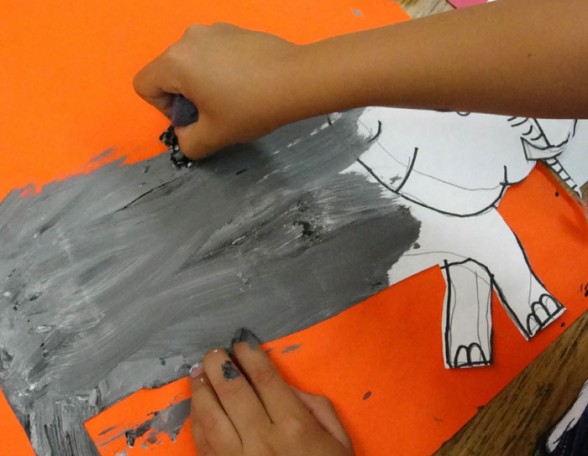
Cut out the elephant along all the outside lines (contour lines). Place elephant onto a “placemat” (table protector) and sponge paint/brush paint/or even finger paint a mixture of black and white onto the elephant. Add pink if you wish for toes and ears.
Step Three: Adding a Background
The background is the fun part. I placed a selection of 12″ x 18″ sheets of paper on a table and each student could pick their favorite color. Then, I placed a smattering of paint colors on their tables and let each student design their elephant background. You can see that the traditional background of sky/sun/ground was popular but so was free-expression painting. Once children realized that a background could mean anything, their efforts became more liberal.
Third Grade Efforts…
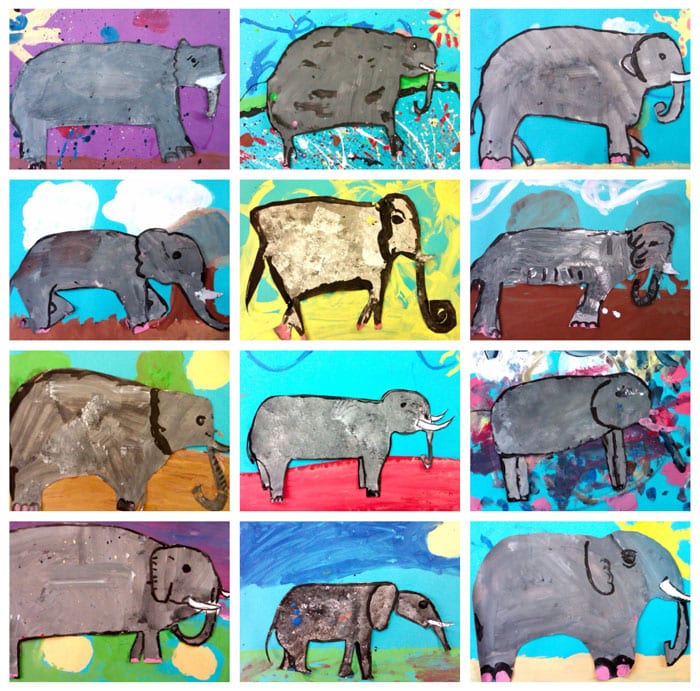
ARE YOU A SPARKLER? Access 0ver 300 art lessons, videos, resources & trainings for one low monthly fee.
CLICK THE IMAGE TO SIGN UP FOR NOTIFICATION OF OUR NEXT ENROLLMENT

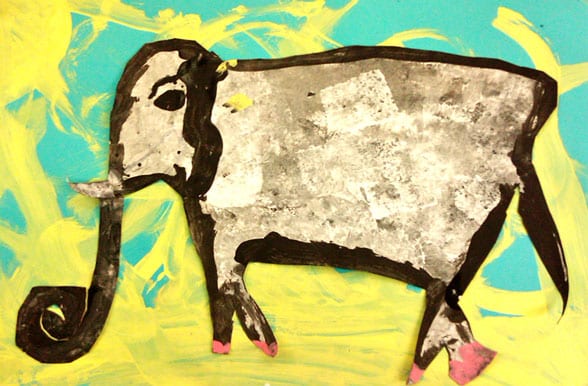





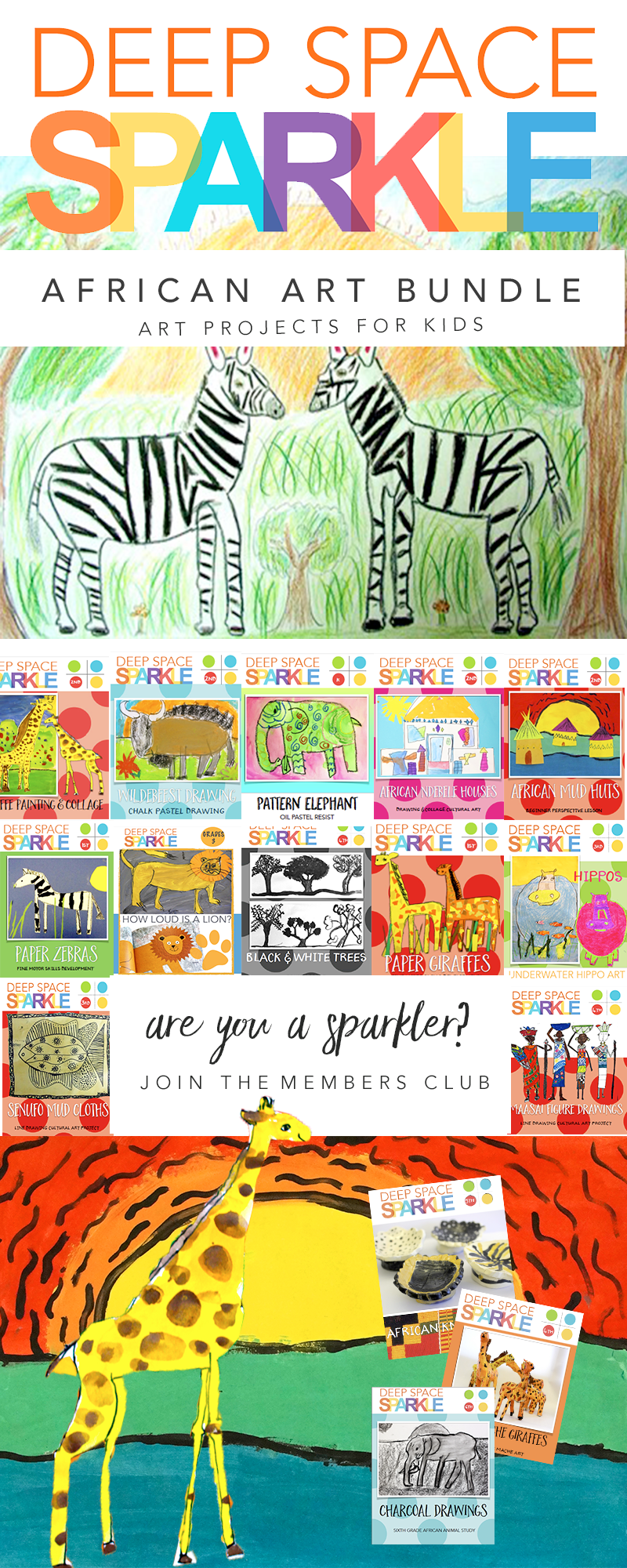






Love the elephants…It gave me an idea for another project for my kids (I’ll have to try it after all the Christmas crafts though).
Very cute! My 3rd-graders would love this project.
LOVE THE ELEPHANTS I have made elephants before but to get a great rumpled skin we glued on a piece of tissue paper cut larger than the A3 white cartridge paper. We used a cellmix -wall paper type paste- cellulose glue for gluing and as we placed the tissue onto the base paper we manipulated it to get a rough texture. They then became African elephants and or Circus elephants.
Great idea Cheryl. Love the texture idea. I’m going to try that.
Can I ask what grade you did this lesson with? Seems like it would work for my 1st graders… (Sorry if you mentioned it and I just can’t see it… workin’ on my first cup of coffee!) Thank you for this wonderful blog…
Mostly third grade but a few seconds (combo class). I’d think this lesson would be great for 1st grade. Like I said in the post, all elephants are great elephants!
How many class periods did this take, Patty? I think I’ll give it a try with first graders. If you’ve got a trunk and floppy ears, you’ve got an elephant!
For a class of 25 kids, about two @ 40-minutes.